There are so many books that propose to be authoritative and essential to studying Tolkien and/or Middle-earth that I thought it might be helpful for me to put together a list of recommended books. This list is focused specifically on reference books: encyclopedias, dictionaries, atlases, guides, companions, etc.I have already addressed biographies in a separate post.
In a way, this will help readers interested in digging deeper to avoid texts that may have inaccuracies or fabrications.
I have split my list into books that I recommend and books that I do not recommend. There are, of course, many more reference works that I have not commented on. This is not meant to be an exhaustive list. I welcome feedback and additions in the comments!
Many thanks to Dimitra Fimi, Andrew Higgins, Jeremy Edmonds, James Tauber, Shaun Gunner, and Nelson Goering for sharing their thoughts with me as I compiled this list (any inaccuracies that persist, however, are my own)!
One final thing: I try to make as much public content as possible. So please, while you are here, look around the site at the resources and the archives. If you like what you see, come back often, and maybe even consider visiting the Support page.
Recommended
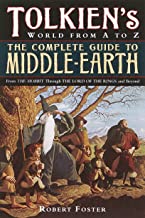
Tolkien’s World from A to Z: The Complete Guide to Middle-earth by Robert Foster
A strong candidate for the most useful reference book for Middle-earth. It offers simple definitions like a dictionary, and also has citation of where to find important passages (unlike the Tyler book below, which lacks the references).
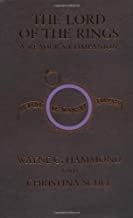
The Lord of The Rings: A Reader’s Companion by Wayne Hammond and Christina Scull
This is a very informative and helpful volume with a lot contextual information about The Lord of the Rings. It also includes some previously unpublished primary material.
2006 Mythopoeic Award Winner for Inklings Studies
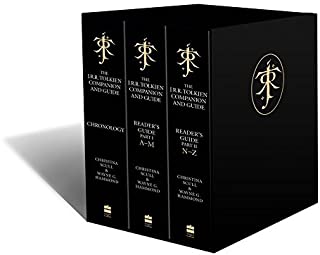
The J.R.R. Tolkien Companion and Guide (second edition) by Christina Scull and Wayne Hammond
This is an excellent resource and is essential for scholars. If you only want a casual introduction, however, this is not the book for you because of its heavy price tag. Please note that the newer edition has three volumes instead of two.
2007 Mythopoeic Award Winner for Inklings Studies
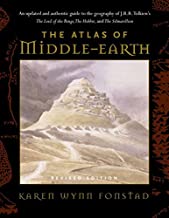
The Atlas of Middle-earth (Revised Edition) by Karen Wynn Fonstad
There are two books that propose to be atlases of Tolkien’s world (see the Strachey book below). This is the more popular of the two, and I must admit that I use it more often simply because it has maps for the first and second ages. It isn’t perfect, but it is certainly helpful.
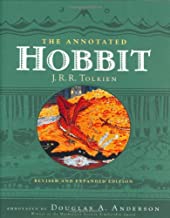
The Annotated Hobbit (Revised and Expanded Edition) by Douglas A. Anderson
This functions very similarly to the Hammond and Scull book above, but focuses in on The Hobbit with a lot of extra-textual information and context.
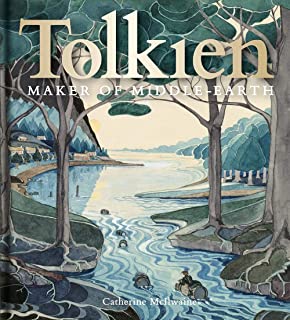
Tolkien: Maker of Middle-earth by Catherine McIlwaine
Although it’s original intent as a catalogue for the exhibition it accompanied does limit it’s scope (compared to other reference works) it is a very useful piece for knowing more about Tolkien and about artifacts in his life. Personally, I view it as more of a biography (which is why it is listed in my post about biographies), but I have caved to pressure to put it here as well. There is great production value in this book!.
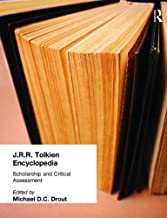
J.R.R. Tolkien Encyclopedia edited by Michael D.C. Drout
This one is more of a specialist text, and the price reflects that. It is not essential to understanding Tolkien’s work, but it has a lot of entries that help to contextualize the work and explain different facets of it.
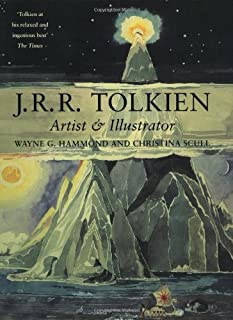
J.R.R. Tolkien: Artist and Illustrator by Wayne Hammond and Christina Scull
This text, along with The Art of the Lord of the Rings and The Art of The Hobbit (also by Hammond and Scull) are seminal works for looking at Tolkien’s achievements and development as an artist. Again, there is a very high production value on these books! (Not to be confused with other texts with similar titles but different editors.)
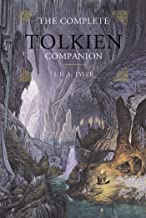
The Complete Tolkien Companion by J.E.A. Tyler
This newer edition incorporates material from Unfinished Tales and parts of History of Middle-earth, so don’t confuse it with the earlier editions with slightly different titles. A useful text but, as noted above, it lacks the references which would make it more useful.
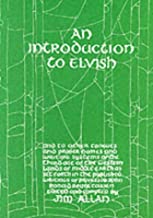
An Introduction to Elvish by Jim Allan
This is the best guide to elvish currently available. It is dated and there had been a lot of new material published since, but it is still a useful guide to methodology. There is ongoing work on Tolkien’s languages by the Elven Linguistic Fellowship. (See free resources below for more.)
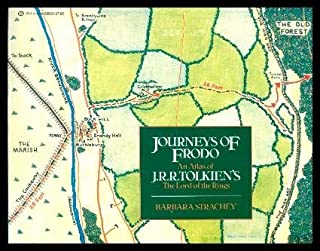
Journeys of Frodo by Barbara Strachey
This is a decent atlas, although it does have some problems with scaling. As I said above, this book is more specific than the Fonstad atlas so I end up not using it as much. (This one is a bit older so it is hard to find in as usable a condition, but the maps are all on a single page, so the part you want is never buried in the binding.)
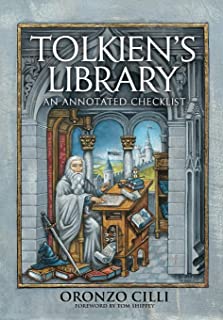
Tolkien’s Library by Oronzo Cilli
This book is an attempt to catalogue the books that Tolkien owned, read, or referenced. A couple of people have made qualms about parts of the text, but overall it remains a helpful guide.

Flora and Fauna of Middle-earth by Walter S. Judd and Graham A. Judd
I have put this as the last recommended text because, in some ways, it is not strictly a reference work. At times, the authors speculate what plants could be the inspiration for or equivalent of those found in Middle-earth. This isn’t quite the intent of a stereotypical reference book, but it is an interesting resource nonetheless.
Not Recommended
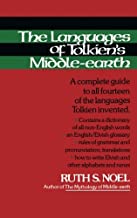
The Languages of Tolkien’s Middle-earth by Ruth S. Noel
An early attempt to make sense of Tolkien’s languages that has not aged well.
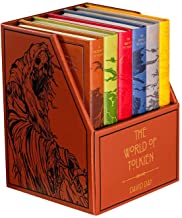
David Day Texts
David Day is frequently disparaged in discussions about Tolkien reference books. I will just mention two concerns: First, there are errors and spaces where Day seems to suggest that something is of Tolkien’s invention when it is in fact his own. Second, the various books with his name often seem to repackage the same information in different ways. (Day has claimed that the various reprints are the fault of his publisher.) Unfortunately, these reprints never seem to incorporate corrections to errors pointed out in previous editions.
It is best to avoid all David Day books.
Free Resources
Every fledgling scholar or fan wanting to dig deeper knows the importance of free resources, so here are some credible online resources to help you expand your knowledge pool:
Mythlore: this is the peer-reviewed journal of the Mythopoeic society. The journal is Open Access and is available online.
Journal of Tolkien Research: This is another Open Access Online journal that is peer-reviewed by very reputable Tolkien scholars.
LOTRProject.com: This website, created by Emil Johansson, has a lot of very useful resources like family trees, maps, and calendars
Elvish.org: This is the homepage for the Elvish Linguistic Fellowship, and it is the source for the most up-to-date information about Tolkien’s languages. Of particular note is this essay by Hostetter.
The Tolkien Art Index: Scholar Erik Mueller-Harder has compiled a useful index of every piece of art by Tolkien.
LR Citations: Another helpful tool by Erik Mueller-Harder that lets you cross-reference different settings and editions of The Lord of the Rings.
Ardalambion: This is an online guide to Tolkien’s invented languages.
Digital Tolkien: James Tauber has many useful projects in the work. The most complete is a catalogue of textual variants in print copies of The Silmarillion.
Tolkien Gateway: This is a fan-run online encyclopedia. It has good entries for many topics about Tolkien and his work.
As I said at the beginning, this is not an exhaustive list. I only had a couple of hours to spend pulling it all together. I welcome and encourage feedback in the comments! I will occasionally update this list to reflect new developments!
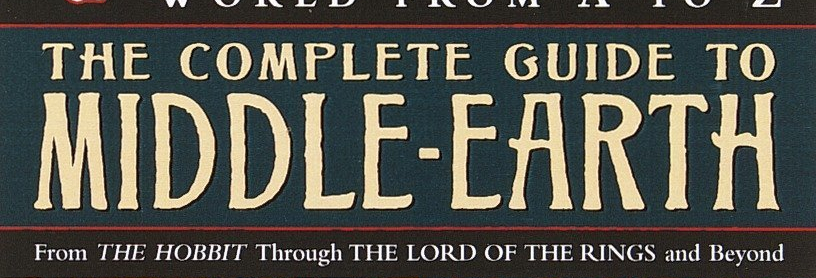

I would add that my copy of The Tolkien Encyclopedia was very poorly made, especially given the price. It fell apart after only slight use, and it cost me much more than the original cost of the book to have it properly bound.
I hope that it was only my copy that was so poorly made, since the book is otherwise a generally useful reference.
LikeLiked by 1 person
I would agree that the care put in by the scholars was definitely not matched with a binding of similar quality by the publisher. I am always very gentle with mine.
LikeLike
While researching places of inspiration to JRR Tolkien not just Birmingham and Worcestershire, however crucial these were, i just bought every book about JRR’s writing that i came across, and ordered a few.. Few of them refer to sources of information used, except in never looked at indexes, maybe, and with any copies few and far between, or mostly non-existent;
So the best seen, by far, is Phil Mathison, JRR Tolkien in East Yorkshire, (1917-1918) An Illustrated Tour.. And by the intensity of presentation of detail and sources, for websites seen, it must be the Tolkniety sites that revealed JRR’s family as the Polish Tolkiens, with a JRR’s own Great Grandfather born in Gdansk, Poland.
Just looking at places and spending time where JRR lived and worked, in Holderness, East Yorkshire, and Leeds, for example, found things that none of the regular authors found, simply because they didn’t spend the time there enough.
A plaque inside a pub with a Tolkien/ Middle Earth room in Leeds says JRR was writing The Hobbit and Lord Of The Rings while he was in Leeds.. He was doing no such thing, though it had taken a search of at least two or three books to find and corroborate the date JRR started writing The Hobbit, (followed by The Lord Of The Rings), and so most likely 1928 or 29.
JRR was in Leeds 1920-1925, so there’s no question that the time so close to the beginning of writing of The Hobbit would have been crucial to what went into the writing, but he wasn’t writing The Hobbit there, as claimed.
And so while the first words of, and so the book The Hobbit were written in 1928, JRR was already writing stories that were incorporated and matched into the history of all of his created world, Middle Earth, the Earendel The Mariner story, for example, in 1914. And so other stories being written also incorporated into Middle Earth, on from 1917, in Holderness, where he described “The most emotive moment of my life” as the “kernel” and as “the beginning of all of Middle Earth” and “The first story of Middle Earth” (Luthien and Beren)- himself and his wife, when his wife sang and danced for him in a wood-grove glade next to Roos Church, Holderness.
The book authors are looked at to find maybe what quotes there are of JRR himself, though none of them write about the Skyrack Inn, across from The Original Shire Oak Inn, and next to The Shire Oak Tree location, with a descendant growing next to it, and an engraved stone description included, and Shire Oak Lane and so on; a Wappentake location in Viking times, all very JRR, and all half a minutes walk from one of the four known addresses where JRR lived while in Leeds.
Not even the people in Leeds who say it all began in Meanwood Valley, Leeds, refer to The Shire Oak, and so authors who just look at letters and other books have made little or no connection here..
No assumed, presumed claim is being made for the Shire Oak, Leeds, because no letter or quote of JRR’s is known of to support any connection. And a scan of every single page of all of The Hobbit was made, corroborating that there was no such place (named), as The Shire, in The Hobbit, and so explained by JRR though that The Shire was only named when the area that the Hobbits lived in needed a name when in the context and surround of the rest of Middle Earth, around it, when Lord of The rings was being written.
The bulk of the books collected:
Humphrey Carpenter a biorgaphy
Michael White a biography
Mark Atherton There and Back
Robert Foster The Complete Guide To Middle Earth
Lin Carter Tokien a look behind the lord of the rings
Nigel Cawthorne A Brief Guide To JRR Tolkien
Wayne G Hammond & Christina Scull The LOTR A Reader’s Companion
dvd JRR Tolkien Master Of The Rings the definitive guide to the world of the rings.
dvd National Geograhic Beyond The Movie ….of how this imaginary world reflects our own.
Colin Duriez JRR Tolkien Amazing and Extraordinary Facts
Robert S Blackham The JRR Tolkien Miscellany
John Garth Tolkien and The Great War
Barbara Strachey Journeys of Frodo – Atlas of Lord of The Rings
Chris Tolkien The Book of Lost Tales I
Chris Tolkien The Book of Lost Tales II
Chris Tolkien The History of The Lord of The Rings part 2 The Treason Of Isengard
(there are countless numerous books written by Chris Tolkien, about his father’s work, including a complete Silmarillion, that JRR originally wanted to publish as part of The Lord of The Rings).
The Pitkin Guide to JRR Tolkien
S Blackham JRR Booklet at Sarehole
Birding with Flowers Holderness website
Phil Mathison JRR Tolkien in East Yorkshire 1917-1918
The Hungry Hobbit Menu / cafe at Sarehole
Stonyhurst/ Hurst Green Lancashire Local Guide/ Trail
Sarehole Local Guide
Various glossy magazines.. With copied connections as fact, but never researched by anyone, including the author of the material copied from, who made it clear he had done no research himself.
LikeLike
..Correction…. JRR’s Great Great Grandfather, not Great Grandfather, as noted; moved from Poland or Prussia to England, around the 1770s.. and there’s still no book or book-like website seen that beats the Tolknienty site, richly illustrated, including copy of research, birth certificates, etc, and done in a manner of an intensity of full time professional detectives..
David Day’s books noted as inventive, etc, and while on this issue, so are Humphrey Carpenter’s elaborations etc, well known about in the Tolkien world.
When no internet was used to try to make a list of the five or six or more of JRR’s addresses while he lived in Birmingham, on from Sarehole; it took searching in three or more books that collectively named them all.
In Leeds, where JRR taught, 1920-1925, four addresses were found, also only from different books, and to corroborate all four. But when in Leeds, there was talk of a mystery unknown fifth address.
Suspected as a maybe a lodging; as academic sort of people did at the time, while keeping their home address; but an address was an address, and eventually appeared in a Colin Duriez biography, ‘CS Lewis and JRR Tolkien’
(Any book about just CS Lewis was without any exceptions recalled, included at least a few if not numerous ‘Tolkien’ references in the Index of the book, so also a source of events etc of JRR’s life that aren’t included in all of the regular most-read books, as in the list above..
Looking at lists at Leeds University’s Brotherton Library,* not easy to get a pass, but also accessible at Leeds City Library, *Brotherton Library, built a short few years after JRR moved back to Oxford; there is the original Gordon-Tolkien Collection, co-created by the two professors, and documents papers and books in the Collection are now hundreds, numerous..
And the books and in numerous languages of all the world around and that are written about JRR and his writing, looks like it goes into hundreds on hundreds, or thousands, while for artwork it’s more like tens of thousands, and feasibly the ‘most painted’ writer/ author in existence, so to speak..
A hello and goodbye to this site, while not about to turn to being a ‘Books About JRR Tolkien’ critic, or to ‘piggy-back’ someone’s site for a separate research presentation or self advertisement.
A most prominent of the writers about JRR; Hammond and Scull, jump on Humphrey Carpenter for getting one of JRR Tolkien’s Leeds addresses wrong, and so repeated in all of the other books; that it’s not number 12, twelve, St Mark’s Terrace, but 11, eleven.
Hammond and Scull don’t say or show how they made this conclusion though, so for someone who wants to make a life of reading every one of JRR’s letters, in collections not sure where and not easy just by the scale/ time needed to do this.. and so this would just be a start to a massive task to ensure that every corroboration, or not; and every new addition found was also included, and photographed, photocopied, downloaded, etc, if it’s even legal to copy any of the letters, for example..
By the best known of, so far, the half-and-half, and page by page, half writing and half visual,with pictures and copies of documents etc,or just including copies of documents with addresses, for example, and eyes-on visited locations photographed, and so on, are still just the Tolkienty/ Tolkiety site, and Phil Mathison book for Holderness,
..home of JRR’s ‘kernel’ ‘beginning’ and ‘first story’ Luthien and Beren, that he took to his grave, literally; Luthien for wife Edith, and Beren for himself, on the couple’s gravestone in Oxford.. as well as creating Middle Earth, and Middle Earth’s Creation Myth, and the Three Silmaryl Gemstones, along with the stories written or already being written, while in Holderness and Hull Military Hospital, like The Fall of Gondolin, for example, and at this time including a blank book that he titled in capital letters THE BOOK OF LOST TALES..
For inconsistencies, literally, rather than academic, JRR is the top of them all, while he constantly updated, changed, added on; on and on, much of what he was writing, that like father like son, Philologist Chis Tolkien then wrote numerous books about his father’s writing that illustrate this Point..
This account comes from Frodo Baggin’s Publisher’s Great Great Great Grandson, as translated by Elves from Early Anglo-Saxon English, in a book made by Dwarves, and found in Iceland by Gandalf, when he was promoting The Icelandic Edda Books, in which he appears as a half Human half Elf, or similar… (the exact quote in this style is very similar, JRR attributes his writing to characters of his books, with The Red Book of Westmarch included by JRR/ and a literary style noted by one writer as popular in JRR Tolkien’s time).
please stay safe in the plagues; and fires if you’re in California and Australia; and floods if you’re on a low lying Ocean island or Coastline..
Tolkien’s favorite (apart from the Welsh language that he based the Higher Elven language on, as visible in the films, so to speak), Scandinavian, that JRR spoke fluent Icelandic before he left school, as the main language spoken at one time across all of Scandinavia; and Scandinavian languages and culture and mythology and history all a JRR Tolkien favorite; are now also brought to life, alive, with a one Nordic Elf-Girl who should be Queen and Ruler of all of the world, and born on the same birth-date as JRR Tolkien, January 3rd; and 111 years apart..
…and so more green food and herbs for people, to keep the immune system strong, that the virus is already turning people to healthier eating, so maybe a world/ planet to survive the damage and mess still being added to, would be good as well..
LikeLike